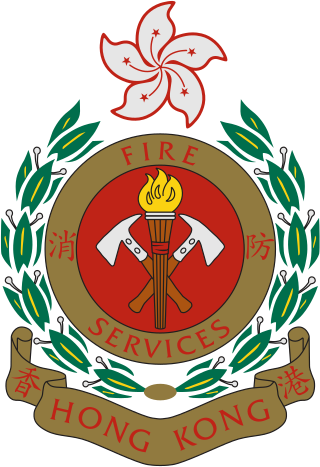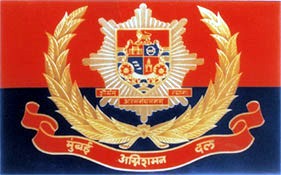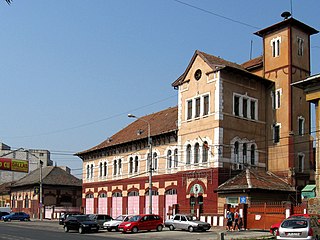
On Monday, December 1, 1958, a fire broke out at Our Lady of the Angels School in Chicago, Illinois, shortly before classes were to be dismissed for the day. The fire originated in the basement near the foot of a stairway. The elementary school was operated by the Archdiocese of Chicago and had an enrollment of approximately 1600 students. A total of 92 pupils and 3 nuns ultimately died when smoke, heat, fire, and toxic gases cut off their normal means of egress through corridors and stairways. Many more were injured when they jumped from second-floor windows which, because the building had a raised basement, were nearly as high as a third floor would be on level ground.

The Garley Building fire took place on 20 November 1996 in the 16-storey Garley commercial building located at 232–240 Nathan Road, Jordan, Hong Kong. It was a catastrophe that caused 41 deaths and 81 injuries. It is considered the worst building fire in Hong Kong during peacetime. The fire damaged the bottom two floors and the top three floors of the building, while the middle floors remained relatively intact.
Firefighting jargon includes a diverse lexicon of both common and idiosyncratic terms. One problem that exists in trying to create a list such as this is that much of the terminology used by a particular department is specifically defined in their particular standing operating procedures, such that two departments may have completely different terms for the same thing. For example, depending on whom one asks, a safety team may be referred to as a standby, a RIT or RIG or RIC, or a FAST. Furthermore, a department may change a definition within its SOP, such that one year it may be RIT, and the next RIG or RIC.

The Hong Kong Fire Services Department is an emergency service responsible for firefighting and rescue on land and sea. It also provides an emergency ambulance service for the sick and the injured and gives fire protection advice to the public. It is under the Secretary for Security who heads the Security Bureau.

The London Fire Brigade (LFB) is the fire and rescue service for London, the capital of the United Kingdom. It was formed by the Metropolitan Fire Brigade Act 1865, under the leadership of superintendent Eyre Massey Shaw. It has 5,992 staff, including 5,096 operational firefighters and officers based at 102 fire stations.

Vancouver Fire and Rescue Services (VFRS) was founded in 1886 and today serves the city of Vancouver, British Columbia, providing fire, medical first response, rescue and extrication services. In 2017, VFRS responded to 67,000 emergency calls.
The Worsley Hotel Fire was a major arson fire at the Worsley Hotel in Maida Vale, London on 13 December 1974. It killed seven people, including a probationary firefighter.

Hook and Ladder is a 1924 American silent Western film directed by Edward Sedgwick and featuring Hoot Gibson.
Firefighting is the act of extinguishing destructive fires. A firefighter fights these fires with the intent to prevent destruction of life, property and the environment. Firefighting is a highly technical profession, which requires years of training and education in order to become proficient. A fire can rapidly spread and endanger many lives; however, with modern firefighting techniques, catastrophe can usually be avoided. To help prevent fires from starting, a firefighter's duties include public education and conducting fire inspections. Because firefighters are often the first responders to victims in critical conditions, firefighters often also provide basic life support as emergency medical technicians or advanced life support as licensed paramedics. Firefighters make up one of the major emergency services, along with the emergency medical service, the police, and many others.

The Mumbai Fire Brigade is the fire brigade serving the city of Mumbai, India. It is responsible for the provision of fire protection as well as responding to building collapses, drownings, gas leakage, oil spillage, road and rail accidents, bird and animal rescues, fallen trees and taking appropriate action during natural disasters.
The Cheapside Street whisky bond fire in Glasgow on 28 March 1960 was Britain's worst peacetime fire services disaster. The fire at a whisky bond killed 14 fire service and 5 salvage corps personnel. This fire was overshadowed only by a similar fire in James Watt Street on 19 November 1968, when 22 people died.
The James Watt Street fire on Monday, 18 November 1968, was a fatal factory fire in Glasgow, Scotland leading to a large loss of life, with 22 employees killed. The number of fatalities was a consequence of the building retaining barred windows, a feature remaining from its previous use as a whisky bond. Around 100 firemen from Glasgow Fire Service attended this incident, which reinforced Glasgow's reputation for tragic fires in the 30 years after the Second World War.
The Yonkers Fire Department (YFD) provides fire protection and emergency medical services to the city of Yonkers, New York, United States.
The Top Storey Club was a nightclub in Bolton, Greater Manchester, England. It achieved notoriety for a fire which occurred on 1 May 1961 in which 19 people perished.
The Vulcan Society, founded in 1940, is a fraternal organization of black firefighters in New York City.
Glasgow Fire Service provided emergency services such as fire prevention, firefighting, emergency medical services and technical rescue to Glasgow, the largest city in Scotland and the third-largest city in the United Kingdom. On 16 May 1975, the Glasgow Fire Service was absorbed into the now defunct Strathclyde Fire and Rescue Service.
On 8 December 2019, a fire occurred at a factory building in Anaj Mandi area of Delhi, India. At least 43 people died and more than 56 were injured.

The Iosefin Fire Station is a historical monument in Timișoara, Romania, designed by Hungarian architect László Székely in the so-called "1900s style". It was built in the Iosefin district, near the old fire station, on the site of the old watchtower. It is currently the headquarters of Timișoara Fire Department 2.

The Exeter City Fire Brigade was the first municipal fire brigade in Exeter, Devon, United Kingdom. The brigade was formed in 1888, on the recommendation of Captain Sir Eyre Shaw, the Chief Officer of the Metropolitan Fire Brigade, who conducted a parliamentary inquiry into the Exeter Theatre Royal fire during which 186 people died, making it still the worst-ever building fire death toll in the UK.









